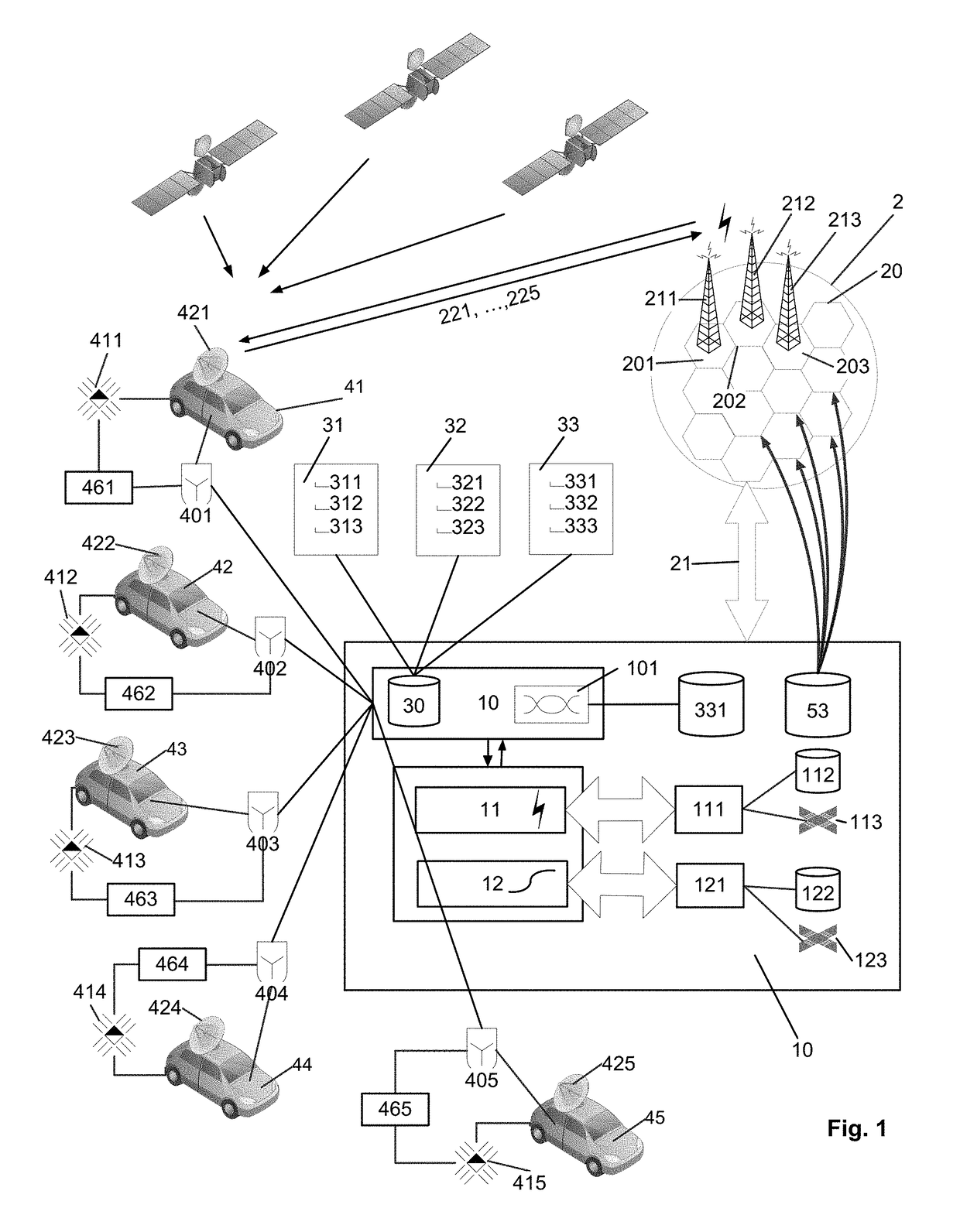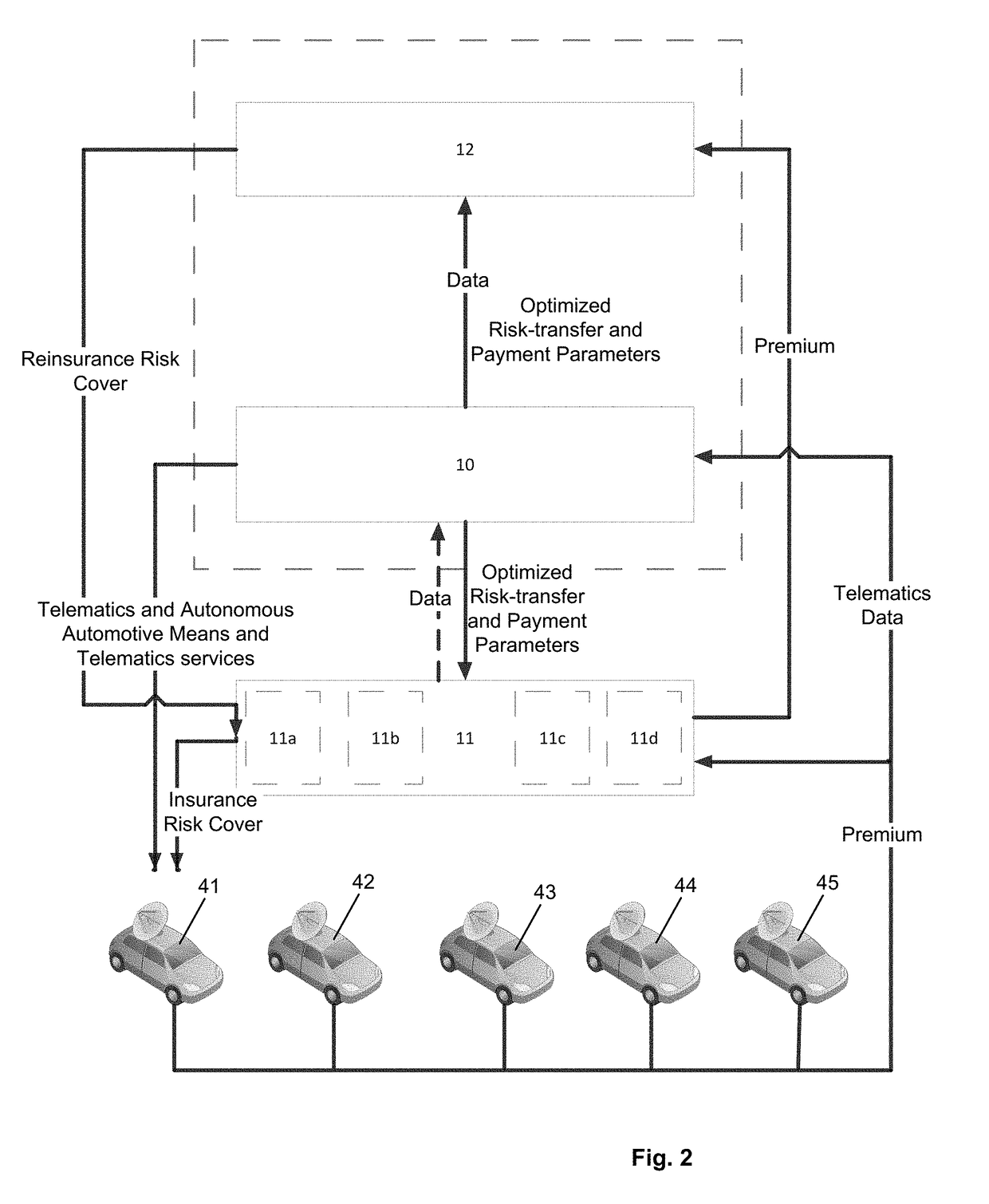Automated, telematics-based system with score-driven triggering and operation of automated sharing economy risk-transfer systems and corresponding method thereof
a technology of risk-transfer system and automated sharing economy, which is applied in the field of mobile real-time systems, can solve the problems of complex technical problems, no clear distinction from professional practices with approved technologies, and challenges to the regulators, so as to improve the capture of risk events or avoid the occurrence of such events. , the effect of improving the system's operational and financial stability
- Summary
- Abstract
- Description
- Claims
- Application Information
AI Technical Summary
Benefits of technology
Problems solved by technology
Method used
Image
Examples
Embodiment Construction
[0042]FIG. 1 schematically illustrates an architecture for a possible implementation of an embodiment of the automated, telematics-based system 1 for electronically triggering score-driven operations associated with motor vehicles 41, . . . , 45 or transportation means of passengers or goods, in particularly providing a dynamic, telematics-based system 1 and telematics data aggregator by means of a central, expert-system-based circuit 10 and telematics devices (411, . . . , 415. The automated, telematics-based system 1 reacts in real-time, dynamically on captured environmental or operational parameters 3, in particular on monitored and captured automotive parameters 3 of motor vehicles 41, . . . , 45 during operation. The present invention further is able to provide a telematics based automated risk-transfer, alert and real-time notification systems for motor vehicles 41, . . . , 45 and wireless technology used in the context of telematics. Finally, the present system 1 also provide...
PUM
 Login to View More
Login to View More Abstract
Description
Claims
Application Information
 Login to View More
Login to View More - R&D
- Intellectual Property
- Life Sciences
- Materials
- Tech Scout
- Unparalleled Data Quality
- Higher Quality Content
- 60% Fewer Hallucinations
Browse by: Latest US Patents, China's latest patents, Technical Efficacy Thesaurus, Application Domain, Technology Topic, Popular Technical Reports.
© 2025 PatSnap. All rights reserved.Legal|Privacy policy|Modern Slavery Act Transparency Statement|Sitemap|About US| Contact US: help@patsnap.com



